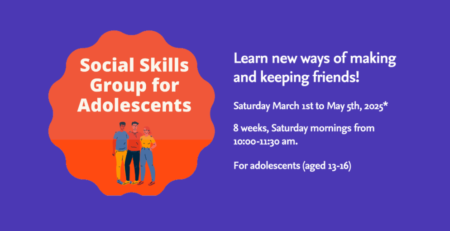ADHD Checklist: Identify Signs in Adults and Children
Attention Deficit-Hyperactivity Disorder (ADHD) is a biological brain condition that can produce inordinate levels of uncontrolled and imprudent behaviour. Additionally, those who suffer from ADHD might have difficulty concentrating on a singular activity or remaining still and quiet for extended periods.
ADHD symptoms can range from mild to severe with different treatment options determined on a case-by-case basis. Scientists hypothesize that a chromosome associated with the production of norepinephrine (a hormone in the body that regulates the brain’s capacity to sustain streamlined awareness), might be connected to ADHD.
ADHD: How is it diagnosed?
Identifying ADHD is not always a simple procedure. This is because their symptoms are often
shaded with a blend of variations that can prove challenging to diagnose. However, there are many ways to determine if you or someone you love truly has ADHD. Although there is no tried and true method, here are a few ways to make a diagnosis. Examinations may be conducted, tests for symptoms can take place, medical checks of client history, as well as tests for other conditions related to ADHD.
The symptoms that are associated with ADHD
Even though symptoms will vary from person to person, generally speaking, you can expect to see features such as:
- Difficulty focusing
- Overly frenzied and excited behaviour
- Unrepressed and uncontrolled emotional outbursts
- Wriggling, shuffling, and otherwise having trouble remaining still and calm
- Disorder, disarray and confusion of priorities
- Explosiveness and volatility
- Difficulty remembering things
- Unable to multitask
- Delaying, stalling, and otherwise wasting time procrastinating
- Easily distracted, etc
The various kinds of ADHD
One of the trademark characteristics of ADHD is the inability to focus and concentrate. The impact of this condition often obstructs normal everyday operations. The symptoms previously listed are the overarching scope of symptoms connected to ADHD. However, those symptoms will vary depending on the subtype. And there are three subtypes associated with ADHD:
- Inattentive
- Impulsive
- Combined
Adults and children experience ADHD differently, which means the symptoms they display will also be different from one another. However, this one concept is omnipresent: If the symptoms are continuously impeding your daily life in a multitude of environments, then be sure to get in touch with a medical professional who can help with a diagnosis.
Symptoms of ADHD: Inattentive guideline
- Unable to hone in on specifics and continually makes sloppy errors in work, school, as well as other areas of life
- Incapable of maintaining focus on activities or tasks
- Doesn’t respond or listen when directly spoken to
- Fails to carry out instructions
- Steers clear of activities that require sustained attention
- Easily forgets and loses items and tools needed for tasks
Symptoms of ADHD: Impulsive guideline
- Constantly squirms, wriggles, and fiddles with hands, feet, arms, legs, etc
- Doesn’t listen when specific instructions are given
- Demonstrates high levels of impatience in ill-suited situations
- Trouble playing in silence
- Incessant chitter-chatter
ADHD: Will it ever disappear?
It is rare that ADHD will disappear into adulthood once diagnosed with it as a child. It can happen, however, that seems to be the exception rather than the rule. But many people have learned to live with it.The good news here is that those who have been diagnosed with ADHD are not alone. Counselling and therapy can help individuals develop the tools and healthy coping techniques they need to lead happy and fulfilling lives.
In fact, there are countless examples of people who have found love, gotten married, created and had long, exceptional careers, etc, while managing their ADHD. And this is all due to these individuals learning how to cope with their symptoms, keeping them in check, and maintaining their self-control. Those with ADHD who don’t receive the proper assessment often have trouble maintaining relationships, holding down steady jobs, and keeping up with the demands of life.
At the end of the day, the success or failure of a person with ADHD really comes down to two variables: the support system of family and friends, and the individual’s desire to live a happy, healthy, and productive life.














